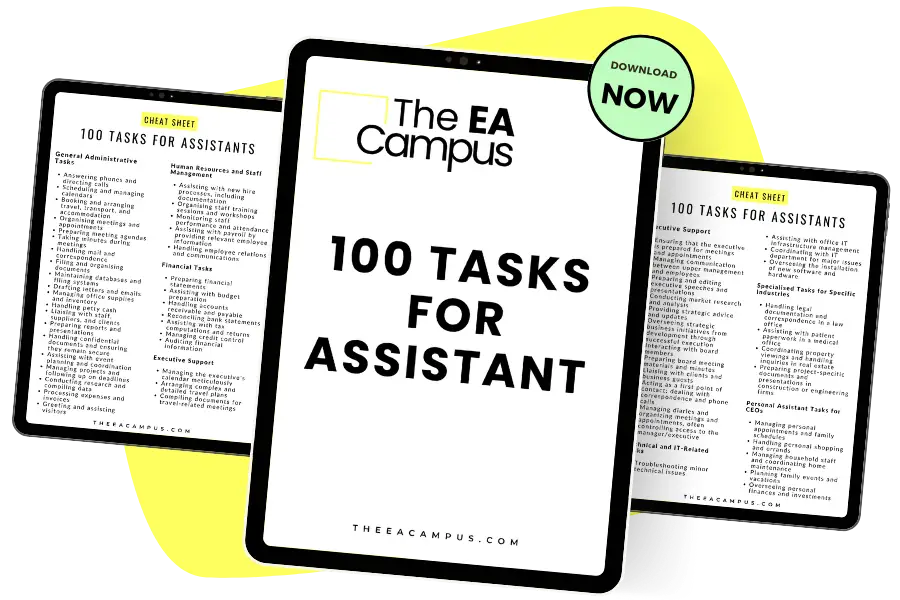How often are we asked to streamline administrative processes without clear guidance or a roadmap? This is a common scenario for many Assistants. Managers might bring in professional consultants for large-scale business improvement projects, yet they often rely on their Assistants to revamp critical administrative workflows without proper instruction or training.
Even if you manage to revamp inefficient admin procedures, how do you ensure your colleagues adopt these changes? How do you make sure your admin improvement projects stick?
Let’s explore some modern project management techniques to help you not only implement changes but also learn how to ensure your admin improvement projects stick.

In today’s fast-paced work environment, Assistants can benefit from integrating proven methodologies like Lean, Six Sigma, Agile, and Design Thinking into their project management toolkit. These frameworks not only help in identifying and solving problems but also foster collaboration and adaptability—essential for successful admin improvement projects.
One of the most effective tools is DMAIC, which stands for:
I’ve found DMAIC invaluable when addressing admin process issues, such as reducing company expenses on hotel accommodations. This structured approach ensures that the changes you make are successful and sustainable. Let’s break down how each phase can be adapted with contemporary project management insights.
The first step is to define the project clearly. This involves:
Tip: Utilize tools like OKRs (Objectives and Key Results) to align your project goals with broader organizational objectives. OKRs help you stay focused and measure success effectively.
In my hotel accommodation project, I narrowed the focus to just hotel expenses, excluding other travel-related costs. This clarity helped streamline the entire process.
Data is at the heart of any improvement project. In this phase, focus on:
Tip: Use tools like Kanban boards or Gantt charts to visualize the current process and identify areas for improvement. These tools provide clarity and help track progress.
For my project, I interviewed team members to understand their booking habits and gathered data highlighting cost drivers.
Analyzing data helps pinpoint the root causes of inefficiencies. During this phase:
Tip: Leverage data visualization tools like Tableau or Power BI to make sense of complex data and present findings clearly to stakeholders.
In my project, the analysis revealed that inconsistent booking methods were driving up costs. Prioritizing this issue helped focus our improvement efforts.
Now comes the action phase. Here’s where you:
Tip: Use Agile methodologies to iterate quickly. Break down the project into sprints, allowing you to test solutions, gather feedback, and make adjustments before full implementation.
In my hotel project, I standardized the booking process through a single supplier, which provided preferred rates and met our needs. This change alone reduced costs by 40%.
The final step ensures the changes stick. This involves:
Tip: Use Continuous Improvement (Kaizen) principles to regularly review and refine the process. Also, consider setting up automated workflows with tools like Zapier or Microsoft Power Automate to enforce the new process and minimize manual errors.
To ensure compliance, I provided my colleagues with a simple reference card for the new booking procedure and followed up periodically to reinforce the changes.
Incorporating modern project management techniques like Agile, Lean, and Six Sigma into your administrative improvement projects can significantly enhance your effectiveness as an Assistant. These methodologies not only help implement changes but also ensure that improvements are sustainable and aligned with organizational goals.
By applying structured methodologies like DMAIC, supported by modern project management tools and techniques, you can ensure your administrative improvement projects are successful and lasting. These approaches allow for flexibility, encourage collaboration, and provide a clear framework for driving meaningful change.
Looking to sharpen your skills further? Enroll in our Assistant Essentials Online Course to master the tools and techniques you need to excel in your role. From project management to advanced administrative strategies, this course will equip you to handle any challenge with confidence!
Share this article:
Join 30,000+ Assistants receiving our carefully crafted weekly newsletter packed with valuable tips, tricks, and insights tailored specifically for Assistants like you.